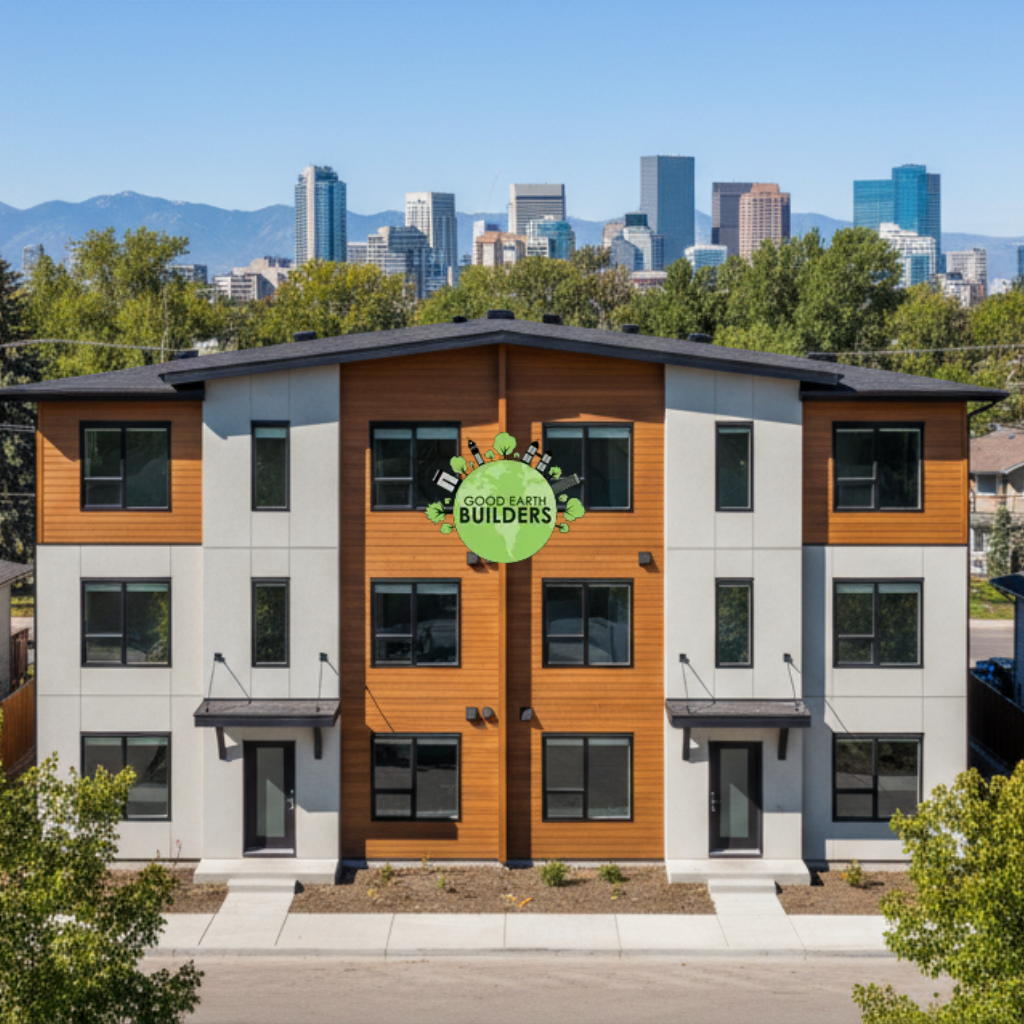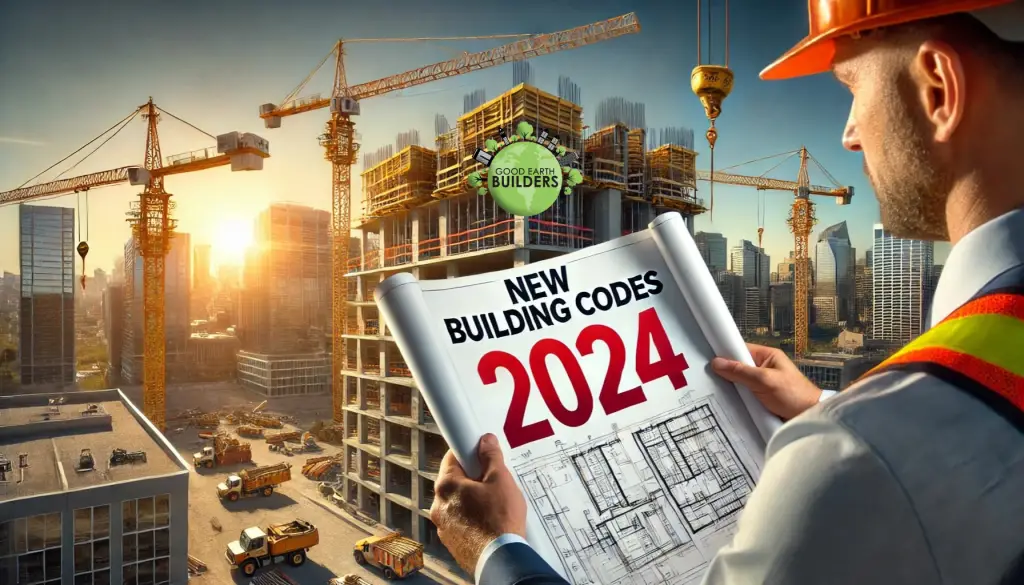Friday, October 10, 2025
The Calgary real estate landscape is undergoing a dramatic transformation. Driven by rapid population growth, a severe housing shortage, and municipal efforts to increase density, the traditional infill market is evolving beyond the duplex and four-plex. For sophisticated investors and developers, the purpose-built 8-plex has emerged as the most compelling model, offering superior density, greater economies of scale, and access to powerful federal financing incentives.
This comprehensive guide delves into the detailed strategy required to successfully execute an 8-plex development in Calgary’s inner-city communities. We will explore the critical financial advantages of CMHC’s MLI Select program, navigate the complex regulatory environment, and outline the high-performance design principles necessary for maximizing long-term cash flow and tenant satisfaction.
Part I: The Financial Foundation — Leveraging CMHC MLI Select
A successful high-density infill project is built on a solid financial structure. For the 8-plex specifically, the Canada Mortgage and Housing Corporation (CMHC) MLI Select program is not merely an option—it is the cornerstone of the entire investment thesis. This program transforms the economics of purpose-built rental properties (which must have five or more units to qualify), making them far more feasible than traditional financing models.
Understanding the CMHC MLI Select Advantage
MLI Select is a mortgage loan insurance product designed to incentivize the construction of multi-unit properties that meet specific targets for affordability, accessibility, and energy efficiency. By committing to these social and environmental outcomes, developers earn a “point score” that unlocks unparalleled financing terms.
The core financial flexibilities available through CMHC MLI Select, particularly when aiming for 70 to 100 points, are game-changing:
- Low Down Payments: The program allows for financing up to 95% Loan-to-Cost (LTC) for new construction. This means a minimum down payment of just 5%, dramatically lowering the initial capital outlay and significantly boosting potential Return on Equity (ROE).
- Extended Amortization: The standard commercial mortgage term is typically 25 years. MLI Select offers amortization periods of up to 50 years. This immediate and profound reduction in monthly debt service translates directly into stronger cash flow from day one, insulating the investment against market fluctuations and high interest rates.
- Reduced Premiums: The insurance premiums themselves are discounted based on the project’s point score. The higher your commitment to social goods, the lower your operating costs.
- Recourse Structure: Achieving the highest point tiers (typically 100+ points) can unlock access to limited-recourse lending, significantly mitigating the personal liability risk for the developer or investor—a rare and valuable feature in commercial financing.
The Point System: Design for Dollars
To secure the most favourable terms, developers must strategically design their 8-plex to accumulate points across the three key areas:
- Affordability (40–100 Points): This is the most crucial category. For new construction, earning 100 points typically requires committing to setting rents for at least 25% of the units at 30% or less of the median renter income in the area. A commitment period of 20 or more years earns an additional 30 points, virtually guaranteeing the best financing tier.
- Energy Efficiency (20–50 Points): This involves committing to a percentage reduction in energy consumption compared to the minimum code (National Energy Code of Canada for Buildings, or NECB). A commitment to be 40% better than the code earns the maximum 50 points. This requires detailed energy modelling during the design phase.
- Accessibility (20–30 Points): Points are earned by incorporating accessible design standards (like wider doorways, barrier-free common areas, and accessible unit layouts) as defined by the CSA standard B651:23.
By deliberately aiming for the 100-point threshold, investors transform the project’s financial profile, ensuring maximal capital efficiency and the strongest possible long-term cash flow. The integration of affordability and energy efficiency is not merely an expense, but a strategic financial decision that unlocks tens of thousands of dollars in annual savings through lower mortgage payments.
Part II: Navigating the Regulatory Landscape
Calgary’s inner-city development is heavily regulated, and the 8-plex model (being Part 3 of the National Building Code, typically) introduces complexities beyond the scope of smaller infill projects. Success hinges on a deep understanding of zoning, city processes, and proactive risk mitigation against community appeals.
The Critical Role of Zoning: M-C1, M-C2, and R-CG
The majority of 8-plex developments are pursued in Calgary’s multi-residential land use districts, such as M-C1 and M-C2. While the recent city-wide rezoning to R-CG has provided more opportunity for four- and six-unit builds, the density required for an efficient 8-plex typically still points to the M-C zones.
- M-C1/M-C2: These zones permit higher density and Floor Area Ratios (FAR). A well-designed 8-plex must achieve maximum possible density within these constraints, including managing parking requirements (often minimized through proximity to transit) and setback requirements.
The Land Assembly Challenge
In many inner-city quadrants, single lots are insufficient to accommodate an 8-plex that meets all Land Use Bylaw (LUB) requirements, such as minimum site area, setbacks, and parking. This often necessitates land assembly, where two adjacent 50-foot lots are purchased, subdivided, and then amalgamated (or tied together for a single Development Permit) to create the necessary land base. This process adds initial time and legal costs but is essential to unlock the scale needed for an 8-plex.
Risk Mitigation: The SDAB Appeal Process
A significant variable in the Calgary development timeline is the potential for a community appeal to the Subdivision and Development Appeal Board (SDAB). Since most 8-plex projects are discretionary uses or require minor variances, they are subject to a 21-day public appeal period following permit approval.
The impact of an SDAB appeal can be severe:
- Time Delay: While the Municipal Government Act (MGA) requires the SDAB to hold a hearing within 30 days of the appeal filing and issue a decision within 15 days of the hearing’s conclusion, the overall timeline is often longer in practice. Recent data from Calgary suggests the average time between an appeal notice and the merit hearing can be over 60 days. This time delay puts pressure on construction financing and delays revenue generation.
- Cost Escalation: Inner-city builders report that carrying costs (interest, insurance, utilities, property taxes) during an appeal delay can easily exceed $500 per day. Factoring in legal fees, consultant fees, and lost opportunity, a protracted appeal can add tens of thousands of dollars to the final project cost, directly eroding profitability and, ultimately, driving up the rental cost for the end user.
The Proactive Approach: To mitigate this risk, developers must engage in genuine community consultation before filing the application. Scheduling a Pre-Application Meeting with The City of Calgary and community associations is an invaluable step to identify potential friction points—such as massing, parking, or privacy—and adjust the design to secure greater community buy-in, streamlining the process toward a non-appealable permit release.
Part III: Design and Code Compliance — Building a High-Performance Asset
An 8-plex falls under Part 3 of the Alberta Building Code (ABC) due to its size and number of units, which subjects it to more rigorous engineering, fire safety, and acoustic separation standards than Part 9 (typically four units or less). These requirements, combined with the energy efficiency targets of the MLI Select program, demand a high-performance design philosophy.
Energy Code and Climate Compatibility: NECB 2020 Tier 1
Since May 1, 2024, all new large multi-residential buildings in Alberta are required to comply with the National Energy Code of Canada for Buildings 2020 (NECB 2020). The current minimum compliance level set by the province is Tier 1 (representing 0% energy improvement over the base code).
However, investors should aim significantly higher:
- MLI Select Mandate: To achieve the MLI Select point thresholds and unlock the best financing, the project must aim for an improvement of 25% to 40% better than the current code. This is typically achieved using the Performance Path of the NECB, which involves sophisticated energy modeling by an accredited consultant.
- Operational Savings: While meeting higher energy targets requires a higher upfront construction cost (better insulation, superior window U-values, high-efficiency HVAC and hot water systems), these expenses are quickly amortized through reduced utility consumption. Lower operating costs lead to higher Net Operating Income (NOI) and a higher eventual property valuation.
- The Green Buildings Priority Stream: Developers aiming for Tier 2 of the NECB (or higher) can apply for The City of Calgary’s Green Buildings Priority Stream. This voluntary program offers accelerated review timelines for Development and Building permits, effectively providing a fast-track incentive that directly offsets the time-cost risk associated with appeals.
Acoustic Excellence: The Part 3 Standard
Tenant retention in multi-unit properties is heavily influenced by quality of life, and noise transfer is a primary complaint. Part 3 of the ABC requires much stricter standards for acoustic separation between units compared to Part 9.
A well-designed 8-plex will aim for an Sound Transmission Class (STC) rating significantly above the minimum code, focusing on:**
- Party Walls: Employing offset double-stud walls, dense-packed cellulose insulation, and multiple layers of fire-rated gypsum board.
- Floor/Ceiling Assemblies: Utilizing resilient channels, acoustic mats, and poured gypsum concrete over the subfloor to prevent impact sound transfer between units.
This focus on acoustic separation transforms the building from a mere apartment block into a premium living experience, justifying higher rents and ensuring lower vacancy rates—a direct boost to the long-term asset value.
Part IV: Execution, Management, and Exit Strategy
The final phase of the 8-plex development cycle involves meticulous construction oversight, professional asset management, and a clear understanding of the investment exit strategy.
Construction Management and Turnkey Delivery
The 8-plex requires specialized contractors familiar with Part 3 commercial code. The construction process is more complex due to required fire-separation assemblies, sprinkler systems, and elevator shafts (if the building exceeds three storeys).
A turnkey approach, managed by an experienced development partner, minimizes investor stress and risk. This involves:
- Integrated Design: Ensuring the architect, energy consultant, structural engineer, and builder are collaboratively integrated from the outset to avoid costly change orders.
- Warranty Protection: The finished asset should be covered by a comprehensive new home warranty (e.g., the 10-year structural warranty mandated in Alberta), providing critical protection for the investor and peace of mind for future refinancing or sale.
Cash Flow vs. Appreciation: The Investor Perspective
The 8-plex is an investment structured primarily for long-term cash flow, supported by stable Calgary market appreciation.
- Strong Cash Flow: The combination of Calgary’s high rental rates (due to a tight market and no provincial rent control), low vacancy rates, and the ultra-low debt service afforded by the 50-year CMHC amortization results in powerful positive cash flow. This shields the investment from temporary economic downturns.
- Value-Add from Green Design: A high-performance building (superior energy efficiency, low operating costs, quiet acoustic separation) attracts premium tenants and maintains higher market value. When it comes time to refinance or sell, the property is valued not just on its physical structure, but on the strength and predictability of its Net Operating Income (NOI), which is maximized by the high-performance design decisions made years earlier.
Conclusion: From Blueprint to Financial Freedom
The 8-plex is the definitive high-density infill strategy for Calgary’s current market. It synthesizes favourable municipal policy with powerful federal financing, creating a robust, profitable, and scalable asset class. By understanding and strategically applying the principles of CMHC MLI Select financing, proactively mitigating regulatory risks like the SDAB appeal, and committing to high-performance design standards, investors can transform a standard infill lot into a multi-generational wealth-building machine.
This complexity, however, requires specialized expertise. Navigating the intersection of Part 3 construction, MLI Select point scoring, and the latest NECB energy codes demands a precise and coordinated approach.
This is where the right partnership becomes invaluable. For serious investors looking to capitalize on this high-density revolution, a specialized development team—like the experts at Good Earth Builders (GEB)—can manage this entire multi-faceted process. GEB specializes in architecting, building, and delivering high-performance, cash-flowing multi-unit assets specifically structured for the CMHC MLI Select program. Don’t risk a project delay or missed financing opportunity; partner with GEB to execute your 8-plex vision flawlessly and secure your financial future in the thriving Calgary market.




